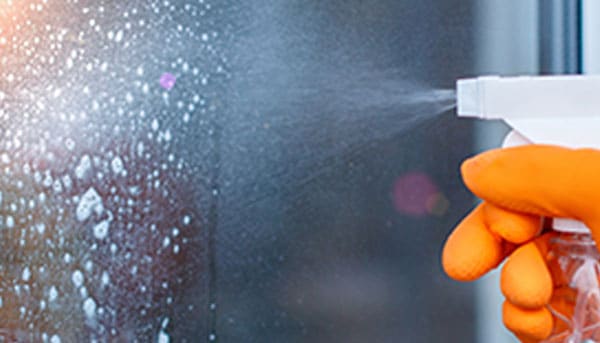
Maintaining your Windows
Looking after your windows and doors will help maximise their life and performance, and enables you to maintain product warranties.
Preventing damage
If your new house or renovation is under construction, check that your builder protects the joinery at all stages during the building process. It’s much easier – and far more cost-effective – to avoid damage than to try to repair it. Inspect the windows and doors on delivery for any damage before they are accepted. And see that windows and doors are installed soon after delivery to site, as they are more likely to get accidentally damaged when stored for extended periods.

Masking
Handle with gloves at all times
Washing and general care
To maintain their performance and looks, all window and door units (whether timber, aluminium or uPVC) benefit from a regular washdown. Wash them all over, not just the parts that are sheltered from the rain. In fact, looking after your windows is very much like looking after a new car – a regular wash keeps your investment in smart condition.

Avoid harsh chemicals
Cleaning
Maintenance
Timber frames
Timber is an excellent framing material that can perform well for decades, so long as you look after it. Water is its greatest enemy, either from rainfall or airborne interior/exterior vapour. Neglected timber can become prone to mould and rot, leading to structural damage, loose panes and thermal inefficiency. In any case, timber is naturally prone to shrinking and expanding depending on humidity and temperature, and this movement will affect paint finish, mechanical fit and performance.
Repair and maintenance
Aluminium frames
For aluminium frames, a washdown every three months is normally sufficient, but you will need to wash them more frequently if you live near the seaside, a building site or an industrial area. A build-up of damaging substances like sea salt, lime or other chemicals can damage the surface finish.
Repair and maintenance
Care with sunscreen
Polishing and recoating
uPVC frames
One of the plus points of uPVC is that it’s a durable and comparatively low-maintenance material. Since it is a plastic, however, there are some treatments that should be avoided as they may leave streaks or scarring. Also, because frames and hardware are technically complex assemblies, it’s far better to prevent damage than attempt repair, making regular maintenance a wise strategy.




